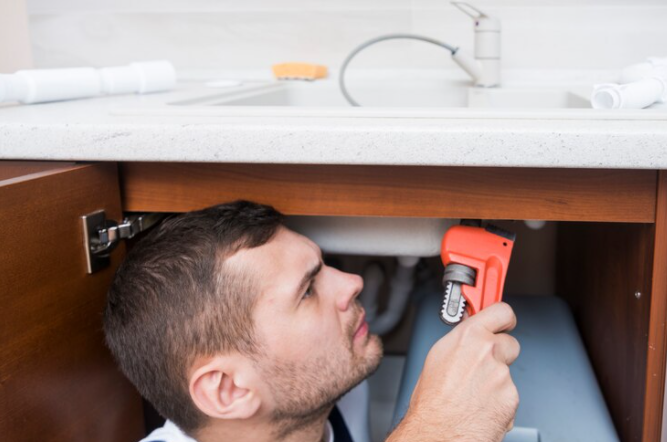Are you experiencing unusually high water bills or damp spots on your walls? Hidden leaks may be the culprit. Leaks can go undetected for months or even years, causing extensive damage to your home and potentially leading to costly repairs. In this article, we will discuss how to detect and resolve hidden leaks in your home, helping you to avoid unnecessary expenses and preserve the integrity of your property.
Detecting hidden leaks can be challenging, as they are often not visible to the naked eye. However, there are several signs that can indicate the presence of a leak, such as musty odours, discoloured walls or ceilings, or a sudden decrease in water pressure. By identifying these warning signs early on, you can take action to prevent further damage and avoid potentially hazardous situations such as mould growth or water damage to electrical systems. For professional help in tracing and accessing hidden leaks, contact Trace and Access London.
Identifying Hidden Water Leaks in Your Home
As a homeowner, it’s important to know how to identify hidden water leaks in your home before they cause significant damage. Water leaks can lead to structural damage, mold growth, and high water bills. In this section, we will discuss two effective methods for identifying hidden water leaks in your home: Trace and Access Techniques and Leak Detection Technology.
Using Trace and Access Techniques
Trace and access techniques involve identifying the source of a water leak by tracing the path of the water. This method is particularly useful for identifying leaks that are hidden behind walls or under floors. Here’s how you can use trace and access techniques to identify a water leak in your home:
- Turn off all the taps and appliances that use water in your home.
- Check your water meter to see if it’s still running. If it is, this could indicate a leak in your home.
- Listen for any sounds of running water. If you hear water running but can’t identify the source, it could be a hidden leak.
- Look for signs of water damage, such as damp patches on walls or ceilings, peeling wallpaper, or blistering paint.
- Use a moisture meter to detect any hidden moisture in walls or floors.
Applying Leak Detection Technology
Leak detection technology is a more advanced method for identifying hidden water leaks in your home. There are several types of leak detection technology available, including acoustic leak detection, thermal imaging, and tracer gas detection. Here’s how you can use leak detection technology to identify a water leak in your home:
- Hire a professional leak detection company to perform a leak detection survey of your home.
- The company will use specialized equipment to identify the source of the leak, such as acoustic listening devices, thermal imaging cameras, or tracer gas detectors.
- Once the source of the leak has been identified, the company can recommend the best course of action for repairing the leak.
By using trace and access techniques or leak detection technology, you can identify hidden water leaks in your home before they cause significant damage. Remember, it’s important to act quickly if you suspect a water leak in your home to prevent further damage and costly repairs.
Professional Solutions for Leak Detection and Repair
If you suspect that your home has hidden water leaks, it is best to seek the services of a professional leak detection company. These professionals have the expertise and equipment necessary to detect hidden leaks in your home.
Hiring Professional Leak Detection Services
When hiring a professional leak detection service, it is important to choose a reputable company with experienced technicians. Look for companies that are licensed and insured, and that have a good track record of providing quality services.
The leak detection process typically involves using advanced technology such as thermal imaging cameras, moisture meters and acoustic equipment to detect the source of the leak. Once the leak is located, the technician will provide you with a detailed report outlining the extent of the damage and the recommended course of action.
Repairing and Mitigating Damage from Hidden Leaks
After the leak has been detected, it is important to repair the damage as soon as possible to prevent further damage to your home. A professional leak detection company can also provide repair services to fix the leak and mitigate any damage that may have occurred.
Repairing hidden leaks often involves removing damaged materials, such as drywall or flooring, and replacing them with new materials. In some cases, the damage may be extensive enough to require more extensive repairs, such as replacing damaged pipes or fixtures.
In addition to repairing the damage, it is also important to take steps to prevent future leaks from occurring. This may include installing water alarms, replacing old pipes or fixtures, or making other upgrades to your home’s plumbing system.
Overall, hiring a professional leak detection service can help you detect and repair hidden leaks in your home, preventing further damage and saving you money in the long run.
Frequently Asked QuestionsHow can one detect a water leak within a wall?
Detecting a water leak within a wall can be challenging, but there are a few signs you can look out for. These include damp patches on walls or ceilings, peeling wallpaper or paint, a musty smell, or the sound of running water when no taps or appliances are in use. If you suspect a leak, it’s best to call a professional plumber to investigate further.
What are the indications of an underground water leak?
Indications of an underground water leak include a sudden increase in your water bill, low water pressure, wet patches in your yard, or a hissing sound coming from your pipes. If you notice any of these signs, it’s important to call a plumber immediately to prevent further damage.
What methods do plumbers utilise to locate underground leaks?
Plumbers use a variety of methods to locate underground leaks, including acoustic detection, thermal imaging, and video inspection. These methods allow plumbers to pinpoint the exact location of the leak, making repairs quicker and more efficient.
What are the most prevalent types of water leaks in homes?
The most prevalent types of water leaks in homes include leaky faucets, running toilets, and burst pipes. It’s important to address these issues as soon as possible to prevent water damage and high water bills.
How can I determine if there’s a leak between my house and the water meter?
To determine if there’s a leak between your house and the water meter, turn off all water appliances and check your water meter. If the meter is still running, you likely have a leak. You can also check for wet patches in your yard or a hissing sound coming from your pipes.
What are effective DIY techniques for identifying leaks in the home?
Effective DIY techniques for identifying leaks in the home include checking for damp patches on walls or ceilings, using a leak detection dye in your toilet tank, and monitoring your water bill for sudden increases. However, it’s important to note that these methods may not always be accurate and it’s best to call a professional plumber if you suspect a leak.
Some parts of this Guide were sourced from https://www.thameswater.co.uk/help/water-and-waste-help/leaks




